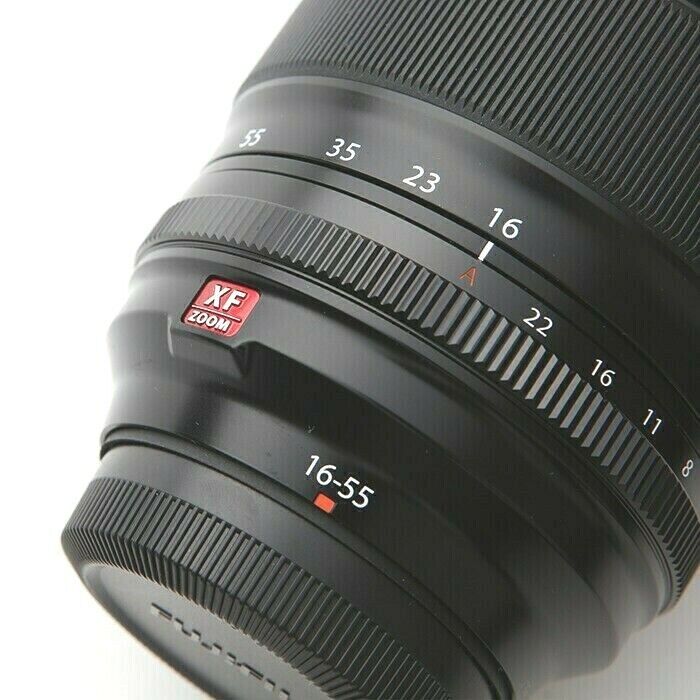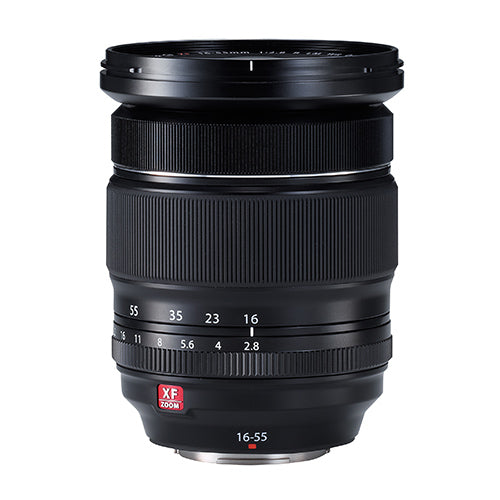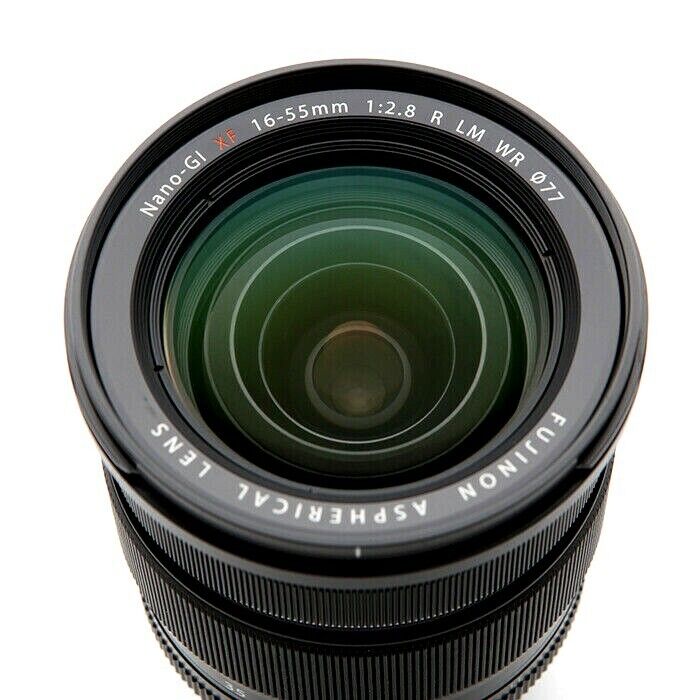Product Description
Fujifilm XF 16-55mm f/2.8 R LM WR Lens
The Fujifilm XF 16-55mm f/2.8 R LM WR is a professional-grade wide-angle to medium telephoto zoom lens, designed to deliver exceptional image quality and versatility. Perfect for various shooting scenarios, from landscapes and portraits to travel and events, this lens features a constant f/2.8 aperture, advanced optics, and durable construction.

Key Features
Versatile Zoom Range
- Covers focal lengths from 16-55mm (equivalent to 24-84mm in 35mm format), making it ideal for landscapes, portraits, and everyday photography.
- Wide-angle to medium telephoto capabilities provide flexibility for a variety of shooting needs.
Outstanding Optical Performance
-
17 elements in 12 groups, including:
- 3 aspherical elements to control spherical aberration and distortion.
- 3 ED (Extra-low Dispersion) elements to minimise lateral and axial chromatic aberration.
- Edge-to-edge sharpness and clarity across the entire zoom range.
- Nano-GI Coating reduces ghosting and flare for enhanced image quality, even in challenging lighting conditions.
Fast and Quiet Autofocusing
- Features a Twin Linear Motor for high-speed, near-silent autofocus.
- Achieves an impressive AF speed of 0.06 seconds, making it suitable for fast-moving subjects and discrete photography in quiet environments.
Constant Aperture
- A bright f/2.8 aperture ensures consistent exposure across the zoom range.
- Excellent for low-light situations and creating a shallow depth of field for beautiful background bokeh.
Rugged Weather-Resistant Design
- Weather-sealed construction protects against dust, moisture, and freezing temperatures as low as -10°C.
- Pairs perfectly with weather-resistant Fujifilm X-Series cameras like the X-T1 for worry-free outdoor shooting.

Specifications
- Focal Length: 16-55mm (24-84mm equivalent in 35mm format)
- Maximum Aperture: f/2.8
- Minimum Aperture: f/22
- Optical Design: 17 elements in 12 groups
- Focus System: Linear Motor with Twin Linear Drive
- Filter Thread: 77mm
- Weather Resistance: Dust, moisture, and freeze-resistant (-10°C)
- Dimensions: 83.3 x 106mm
- Weight: 655g

Why Choose the Fujifilm XF 16-55mm f/2.8 R LM WR?
This lens is the ultimate workhorse for photographers who demand premium image quality and reliability. With its robust construction, fast autofocus, and constant aperture, it’s perfect for professionals and enthusiasts alike. Whether capturing stunning landscapes or candid moments, the XF 16-55mm f/2.8 delivers sharp, vibrant, and true-to-life images every time.
Fujifilm - General Product Safety Regulation (GPSR)
Payment & Security
Your payment information is processed securely. We do not store credit card details nor have access to your credit card information.






















